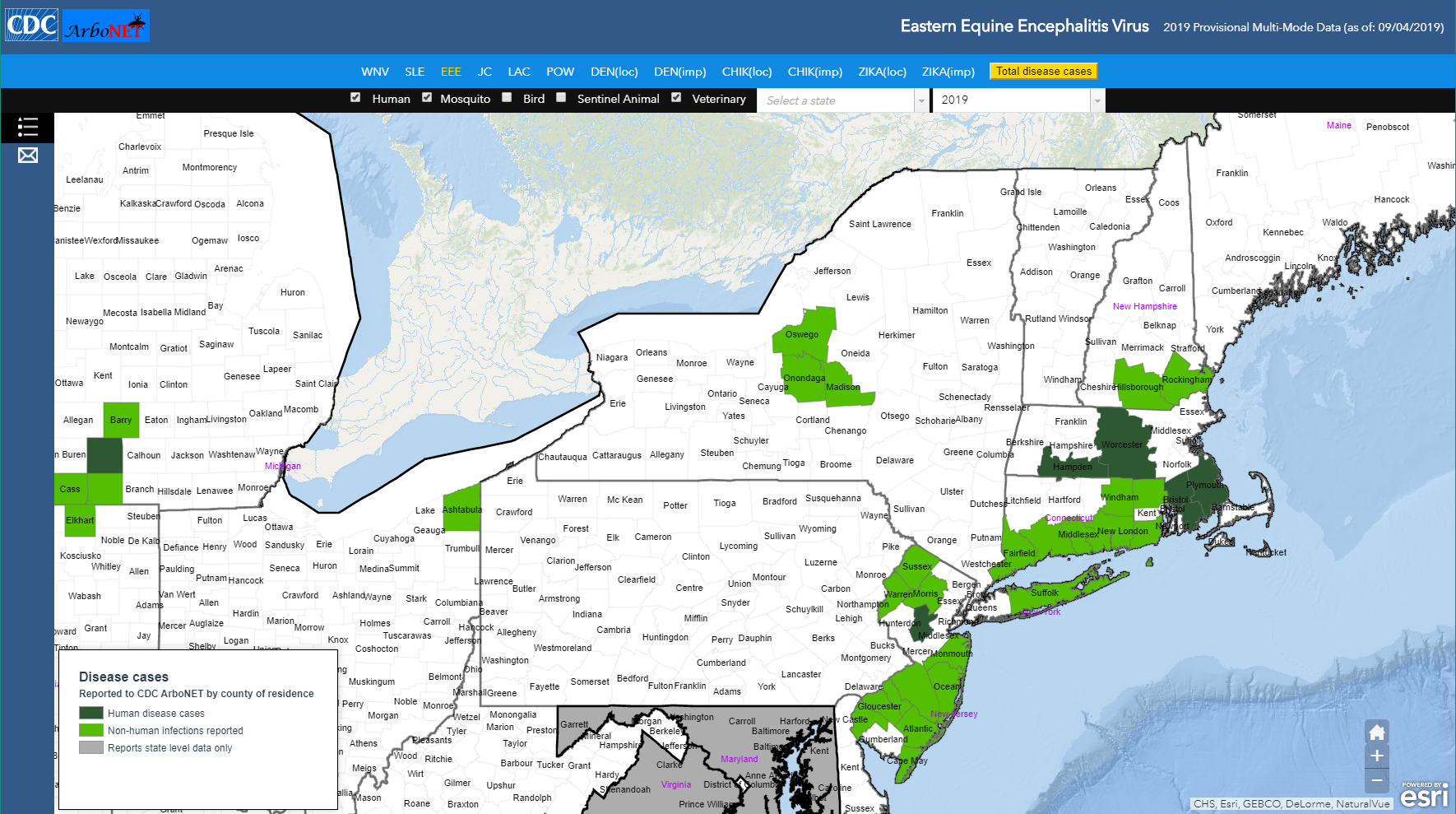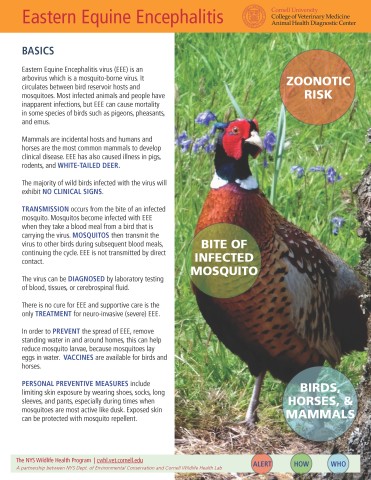Eastern Equine Encephalitis (EEE) is a virus that is spread by mosquitoes. It is carried by many species of native songbirds, and sometimes will cause serious neurologic illness in the rare cases of people and horses that become infected. It typically shows up in mid to late summer in this area of the northeast, but this year it looks like EEE is more active and in more areas than previous years.
Current map of reported EEE cases by county, courtesy of CDC ArboNET
This level of activity, measured in the number of cases and the number of positive mosquitoes, is concerning health officials in our border states of New Jersey, Massachusetts and Connecticut.
In New York, mosquitoes infected with EEE are typically only seen in the counties around the Cicero Swamp- Oswego, Oneida, Madison, and Onondaga. In 2014 Chautauqua county reported positive mosquitoes and a case in a horse. The Department of Health in New York reports the results of weekly mosquito testing.
NYDOH WWW Surveillance_Page_04.png
 As of September 5, there were positive mosquito pools in Suffolk (Manorville) Oswego, Onondaga and Madison Counties, and 5 horse cases: 4 from Oswego and 1 from Ontario. Pesticide spraying has already been done in Cicero Swamp (Onondaga County) and on Long Island (Suffolk) to combat infected mosquitos.
As of September 5, there were positive mosquito pools in Suffolk (Manorville) Oswego, Onondaga and Madison Counties, and 5 horse cases: 4 from Oswego and 1 from Ontario. Pesticide spraying has already been done in Cicero Swamp (Onondaga County) and on Long Island (Suffolk) to combat infected mosquitos.
Most wildlife do not become ill when infected with EEE. There are some reported cases in White-Tailed Deer and non-native game birds, such as pheasants. Our program will be keeping an eye out for suspect cases, and testing any animals that have clinical signs. More info can be found on the disease in our Resource library of disease fact sheets: Eastern Equine Encephalitis




